Results 6,891 to 6,900 of 12094
Thread: Anandtech News
-
04-27-17, 08:43 PM #6891
Anandtech: Acer Announces Predator X27 Monitor: 4K@144 Hz with DCI-P3, HDR10, & G-Syn
At its annual Next@Acer event, Acer formally introduced the Predator X27, its new flagship gaming display. The company's first HDR monitor, the Predator X27 is Acer's implementation of NVIDIA's prototype HDR monitor design, which we first saw back at CES 2017. So like NVIDIA's prototype, Acer is aiming for the top with this monitor, offering 4K, HDR, a wide color gamut, and a high refresh rate all in a single display. Unfortunately for those of you eager to shell out for the Rolls-Royce of gaming monitors, you'll have to wait a bit longer; Acer is not announcing a release date or a price at this time.
By the numbers, the Predator X27 offers a 4K resolution, a 144 Hz refresh rate, a 1000-nits brightness, and uses a quantum dot film to enable HDR10 and the DCI-P3 color gamut. To further appeal to gamers, the Predator X27 also supports NVIDIA’s G-Sync HDR technology as well as Tobii eye-tracking. The new unit is one of a few announced 4K displays to support such a high refresh rate along with HDR10 and NVIDIA’s G-Sync HDR technology.
The Acer Predator X27 is based on AU Optronics’ M270QAN02.2 AHVA panel with a 3840×2160 resolution, 178°/178° horizontal/vertical viewing angles, up to 1,000 nits brightness, a 4 ms response time and a 144 Hz refresh rate. The monitor comes with a direct LED backlighting system with 384 zones, which ensures both high brightness as well as better contrast ratios through localized dimming. The backlighting system is further enhanced with a quantum dot film in order to give the monitor wide color gamut capabilities, allowing it to display 96% of the DCI-P3 color gamut, which pairs up nicely with its HDR support via the HDR10 format. Finally, the Predator X27 features NVIDIA's G-Sync HDR variable refresh rate technology.
To take full advantage of the Predator X27 monitor, gamers are going to need an NVIDIA GeForce GTX 10-series graphics card with a DisplayPort 1.4 connector. NVIDIA & Acer are using every bit of bandwidth offered by DisplayPort 1.4 here, and even that's not enough; the X27's bandwidth requirements actually exceed what DisplayPort can provide. As a result the monitor (like all monitors based on the NVIDIA design) will use 4:2:2 chroma subsampling when gaming to stay within the bandwidth confines of DisplayPort 1.4. Meanwhile as you might expect, the display's lone HDMI 2.0 port is limited to 60Hz operation. In addition, expect the display to require a USB cable to control the Tobii eye-tracking hardware.
To date, only Acer and ASUS have announced gaming displays powered by the M270QAN02.2 AHVA panel from AUO and supporting 4Kp144 with a 1,000 nits brightness, quantum dots, and HDR10. Such monitors in many ways represent a new generation of gaming displays that support not only a high resolution and refresh rate, but also the DCI-P3 color saturation, advanced backlighting with local dimming, and so on.
Acer remained tight-lipped about pricing and availability timeframe of its Predator X27 display, but since AU Optronics is reportedly kicking off mass production of its M270QAN02.2 in July, it is likely that Acer, ASUS and other companies that use the panel may start selling their products on its base in late Q3, or early Q4 2017. As for pricing, we may well be talking about devices with MSRPs north from $1500 (some whispers say so), but Acer and its rivals yet have to announce their MSRPs.Specifications of Acer 4K/144Hz G-SYNC Gaming Monitor Predator X27 Panel 27" IPS (AHVA) Resolution 3840 × 2160 Refresh Rate 144 Hz (w/4:2:2 Choma Subsampling) Variable Refresh Rate NVIDIA G-Sync HDR Response Time 4 ms Brightness 1000 cd/m² Contrast Unknown Backlighting Direct LED, 384 zones Quantum Dot Yes HDR HDR10 Support Viewing Angles 178°/178° horizontal/vertical PPI 163 pixels per inch Colors 1.07 billion Color Saturation sRGB: 100%
Adobe RGB: 99%
DCI-P3: 96%
Rec. 2020: 82%Inputs 2 × DisplayPort 1.4
1 × HDMI 2.0
Gallery: Acer Predator X27




Related Reading:
- Acer Introduces A Pair Of Predator Gaming Displays
- Acer Launches Curved XR382CQK Display: 37.5-inch, 3840×1600, FreeSync, & USB-C
- ASUS Demonstrates ROG Swift PG27UQ: 4K, 144 Hz, HDR, DCI-P3 and G-Sync
- Acer Announces The Acer Predator 21 X: 21-Inch Curved Screen Gaming Notebook
More...
-
04-27-17, 09:14 PM #6892
Anandtech: Intel Announces Q1 2017 Financial Results: Record Quarter
Today Intel announced their earnings for Q1 of their 2017 fiscal year, and the results were good. Intel delivered record revenue for the quarter, of $14.8 billion, up from $13.7 billion a year ago. Intel is a company that loves their margins, and they were once again over 60% for the quarter, coming in at 61.8%, which is 2.5 percentage points higher year-over-year. Operating income was up 40% to $3.6 billion, and net income was up 45% to $3.0 billion, which resulted in earnings-per-share of $0.61 for the quarter, also up 45% from a year ago. This is even though Q1 2016 was 14 weeks, versus 13 weeks in 2017.
Intel’s Client Computing Group continued to have gains, with revenue for the quarter up 6% to $7.976 billion. Significantly for Intel, operating income for this segment jumped from $1.885 billion a year ago, to $3.031 billion this year. While we’ve seen the company forced to slow down its movement to smaller processes, the current 14nm node has been well refined and the Kaby Lake processors have been solid performers. The next generation 10nm node is looking very promising though, with Intel claiming 25% better performance and 45% lower power consumption versus Kaby Lake thanks to the density improvements.Intel Q1 2017 Financial Results (GAAP) Q1'2017 Q4'2016 Q1'2016 Revenue $14.8B $16.4B $13.7B Operating Income $3.6B $4.5B $2.6B Net Income $3.0B $3.6B $2.0B Gross Margin 61.8% 60.9% 59.3% Client Computing Group Revenue $7.976B -12.6% +5.7% Data Center Group Revenue $4.232B -9.34% +5.8% Internet of Things Revenue $721M -0.7% +10.8% Non-Volatile Memory Solutions Group $866M +6.1% +55.5% Intel Security Group $534M -2.9% -0.6% Programmable Solutions Group $425M +1.2% +18.4% All Other Revenue $42M -35.4% -16%
The Data Center Group also had gains, with revenues up 6% year-over-year to $4.232 billion, although the growth has slowed somewhat. Operating income for the group was $1.487 billion for the quarter, down from $1.764 billion a year ago. This will be an interesting space to watch with increased competition in both the x86 and ARM space, but Intel will be releasing new Xeon chips as well with a change in branding.
The Internet of Things Group continued to show gains as well, with revenue up 11% year-over-year to $721 million, and up 35% since Q1 2015, so in two years they have seen some substantial growth in this segment.
Non-Volatile Memory Solutions Group had the largest jump in revenue, with revenue up 55% to $866 million. However, this group also saw an operating loss increase to $129 million, compared to a $95 million loss a year ago. This should be an exciting segment to watch though with Intel bringing their Optane products to market, with both the DC P4800X SSD and Optane caching memory. If you haven’t checked out those reviews yet, they are well worth the read, and 3D XPoint definitely brings some advantages even on a Gen 1 product.
Intel’s Security Group is showing its final mention in their earnings, since Intel’s divestiture of the group closed on April 3, 2017, and subsequently it will fall in to the “All Other” category starting next quarter. Revenue for this group was pretty flat, at $534 million, compared to $537 million a year ago. Operating income was up to $95 million though, from $85 million last year.
The Programable Solutions Group, which is Intel’s FPGA segment, had a revenue increase of 18% to 425 million, and an operating income of $92 million, compared to an operating loss of $200 million a year ago.
Finally, the All Other category had revenues of $42 million and an operating loss of $1.082 billion.
Looking towards next quarter, Intel is forecasting revenues of $14.4 billion, plus or minus $500 million, and a gross margin around 62%, give or take a couple of points.
Source: Intel
More...
-
04-28-17, 09:16 AM #6893
Anandtech: Western Digital Starts Shipments of HGST Ultrastar He12 12 TB HDDs
Western Digital on Wednesday announced that it had begun to ship its HGST Ultrastar He12 hard drives with 12 TB of capacity. The HDDs are the first drives to employ eight platters, so the fact that Western Digital is now shipping them is important not only for its datacenter customers who need massive storage capacities, but also because the drive represents a significant step forward from a technology point of view.
The HGST Ultrastar He12 is based on Western Digital’s fourth-generation HelioSeal technology, which uses eight perpendicular magnetic recording platters with 1.5 TB capacity each. To add the eighth platter, Western Digital had to redesign internal components of its HDDs (including arms and heads) significantly. In addition, the company increased areal density of the platters, which improved the sequential read/write performance of the new hard drives. In particular, Western Digital claims that the HGST Ultrastar He12 has a sustained transfer rate of 255 MB/s, an average latency of 4.16 ms, as well as an average seek time of around 8 ms.
Just like other enterprise-class nearline drives, the Ultrastar He12 features a 7200 RPM spindle speed as well as all the technologies currently found in such hard drives from HGST, including a special micro-actuator that improves the accuracy of head positioning in multi-drive environments (which naturally improves performance, integrity, and reliability), rebuild assist mode to speed up RAID recovery time, and others. Finally, the new drives have SED options as well as Instant Secure Erase feature so to either quickly redeploy or retire a HDD.
The increase of hard drive capacity by 20% to 12 TB brings substantial benefits to operators of cloud and exascale datacenters because such HDDs enable them to boost their storage capacity by 20% (or more, assuming that they are using drives with lower than 10 TB capacity today) without expanding footprint of their building or significantly increasing their power consumption. For example, a standard server rack can store 2400 TB of data if fully populated with 10 TB HDDs today. Meanwhile, if 12 TB hard drives are installed into the same rack, its total storage capacity increases to 2880 TB at the same power and at the same space.HGST Ultrastar He12 General Specifications
(12TB model Specifications only)HUH721212ALE60y
HUH721212ALN60yHUH721212AL420y
HUH721212AL520yCapacity 12 TB RPM 7200 RPM Interface SATA 6 Gbps SAS 12 Gbps DRAM Cache 256 MB Format: Sector Sizes 4Kn: 4096
512e: 5124Kn: 4096, 4112, 4160, 4224
512e: 512, 520, 528Helium-Filling Yes Areal Density 864 Gbit/inch2 Sustained Transfer Rate 255 MB/s Average Latency 4.16 ms Seek Time (read/write) 8/8.6 ms Acoustics 2.0/3.6 Bels Power Rating Idle 5.3 W 6.1 W Operating 7.2 W 9.8 W MTBF 2.5 million hours Warranty 5 Years
Since Western Digital’s HGST Ultrastar He12 are aimed at large enterprises, the company does not advertise their recommended prices; the prices customers will pay depends on the number of drives purchased as well as some other factors. Since Western Digital will eventually offer helium-filled HDDs with eight platters to other kinds of customers too, so once this technology trickles down the general public will be able to take advantage of the fourth-generation HelioSeal platform as well.
Later this year Western Digital plans to start shipments of its HGST Ultrastar He12 drives featuring shingled magnetic recording (SMR) platters and 14 TB of capacity. These drives are designed primarily for archival applications, where data is written sequentially in huge chunks (and is hardly ever updated) and where the peculiarities of SMR do not have a major impact on performance. The upcoming SMR HDDs will have to be managed by their hosts and therefore far not all customers of Western Digital are going to be able to take advantage of them.
Related Reading:
- Seagate Announces Enterprise Capacity 12 TB HDD: 2nd-Gen Helium-Filled Hard Drives
- Seagate Confirms Plans for 12 TB HDD in Near Future, 16 TB HDD Due in 2018
- Western Digital Expands Purple Lineup with a 10 TB Helium-Filled HDD
- Western Digital Announces Ultrastar He12 12 TB and 14 TB HDDs
More...
-
04-28-17, 09:16 AM #6894
Anandtech: AT20 Giveaway Day 3: Intel Core CPUs, SSDs, & Optane Memory Too
Good morning everyone! We’re now on day 3 of our 20 day celebration of AnandTech’s 20th anniversary.
After yesterday’s HTC U Ultra giveaway, today we’re back to PC parts, courtesy of Intel. For today’s giveaway the 800lb gorilla has contributed a true silicon sampler, sending us CPUs, SSDs, and even some Optane Memory cache drives to give away to you.
- 2x Intel Core i7-7700K
- 2x Intel SSD 600p 512GB
- 2x Intel Optane Memory 32GB
The AnandTech 20th Anniversary - Intel Giveaway
Intel Core i7-7700K
First up, Intel’s Core i7-7700K needs no introduction. Intel’s flagship consumer CPU is still the chip to beat for all but the most heavily threaded workloads, thanks to the high IPC of Intel’s architecture combined with the equally high clockspeeds afforded by Kaby Lake. The i7-7700K will turbo boost to 4.5GHz, and as this is an unlocked processor, you can should must always overclock it even further.
As a reminder, retail box i7-7700Ks do not include a cooler, so along with a compatible motherboard you'll need a 3rd party cooler as well to complete the ensemble.Core i7-7700K Specifications Cores/
ThreadsBase/
TurboIGP L3 TDP i7-7700K 4/8 4.2/4.5 HD 630 8 MB 91 W
Intel SSD 600p 512GB
Second on our list of prizes is a pair of Intel 512GB 600p SSDs. The 600p is from Intel’s mainstream SSD family, combining an Intel-customized Silicon Motion SM2260 controller with Intel/Micron’s own 3D TLC NAND. These are single-sided M.2 2280 drives, so they’ll fit in virtually all M.2-equipped motherboards and laptops. And as one of what’s still a relatively small number of NVMe-capable PCIe 3.0 x4 drives on the market, the 512GB 600p can easily sustain reads over several-hundred megabytes-per-second.
As Billy Tallis noted in our review of the drive, the 600p “offer[s] peak performance that is as high as promised” but do bear in mind that these are drives meant for consumer systems. So best not to try running your database server off of one.Intel SSD 600p 512GB Specifications Form Factor single-sided M.2 2280 Controller Intel-customized Silicon Motion SM2260 Interface PCIe 3.0 x4 NAND Intel 384Gb 32-layer 3D TLC SLC Cache Size 17.5 GB Sequential Read 1775 MB/s Sequential Write (SLC Cache) 560 MB/s 4KB Random Read (QD32) 128.5k IOPS 4KB Random Write (QD32) 128k IOPS Endurance 288 TBW Warranty 5 years
Intel Optane Memory 32GB
Finally, we have a pair of Intel’s recently-released Optane Memory cache drives. Built using Intel’s newly-developed next-generation 3D XPoint memory technology, Intel has opted to start the consumer rollout of the technology by building cache drives, which maps well to the higher endurance and higher serial performance of 3D XPoint.
It’s important to note that to take full advantage of these drives, you will need a Kaby Lake Core-series processor and a supported chipset, as that’s the only platform to support Intel’s full Optane cache mode. Otherwise the drives can be used in some other systems, but they’d only show up as a small 32GB NVMe drive. According to our resident SSD-sommelier, Billy Tallis, these drives tend to be best paired with something like a Core i3 processor in a lower-end system, to transparently speed up performance on a HDD boot volume.Intel Optane Memory Specifications Capacity 32 GB Form Factor M.2 2280 B+M key Interface PCIe 3.0 x2 Protocol NVMe 1.1 Controller Intel Memory 128Gb 20nm Intel 3D XPoint Sequential Read 1350 MB/s Sequential Write 290 MB/s Random Read 240k IOPS Random Write 65k IOPS Read Latency 9 µs Write Latency 30 µs Active Power 3.5 W Idle Power 1 W Endurance 182.5 TB Warranty 5 years
Finally, as with our other giveaways, today’s giveaway is only open for 48 hours, so be sure to enter soon. However please note that for legal reasons, we’re only able to open these giveaways to residents of the United States.
Good luck to everyone! And be sure to check in Monday for our next giveaway.
More...
-
04-28-17, 01:25 PM #6895
Anandtech: MSI to Bundle Intel Optane Memory 16 GB Cache Drives with Select Motherboa
MSI this week announced plans to bundle Intel Optane Memory 16 GB caching drives with select Intel 200-series chipset motherboards. The company claims that the drives will not increase prices of motherboards significantly, but will bring tangible performance benefits when it comes to boot times and application launches versus systems employing HDDs.
MSI will add Intel’s Optane Memory 16 GB drives to its Z270 Tomahawk Opt Boost, B250M Bazooka Opt Boost, as well as B250M Pro Opt boost motherboards, which means the company will be hitting gaming, mainstream, and commercial PCs. The consumer Intel Optane Memory caching drives were not designed to replace conventional SSDs, but were developed to enable hybrid storage solutions featuring fast solid-state memory as well as a slower storage device with SATA interface (i.e., an HDD, but SSHDs and even SATA SSDs are formally supported as well). The Intel Optane Memory 16 and 32 GB drives cache frequently used data (i.e., frequently used LBA sectors where Windows boot files and frequently launched applications reside) with the help of Intel’s software and PCH and therefore speed up PCs with mechanical hard drives. Performance-wise, Intel’s Optane Memory 16 GB drive offers up to 900 MB/s sequential read and up to 145 MB/s sequential write speed, but keeping in mind that the drive is used for caching, random read speeds and overall read latency are what matter most.
While MSI bundles the Optane Memory 16 GB drives with select 200-series motherboards, it should be noted that the drives are only supported by Intel’s Core i-series Kaby Lake processors (so, no Celeron or Pentium) and Microsoft Windows 10 64-bit OS. In addition, the Optane Memory drive must be supported by the UEFI firmware of the motherboard.Intel Optane Memory Specifications Capacity 16 GB 32 GB Form Factor M.2 2280 B+M key Interface PCIe 3.0 x2 Protocol NVMe 1.1 Controller Intel Memory 128 Gb 20nm Intel 3D XPoint Sequential Read 900 MB/s 1350 MB/s Sequential Write 145 MB/s 290 MB/s Random Read 190k IOPS 240k IOPS Random Write 35k IOPS 65k IOPS Read Latency 7µs 9 µs Write Latency 18µs 30 µs Active Power 3.5 W 3.5 W Idle Power 1 W 1 W Endurance 182.5 TB 182.5 TB Warranty 5 years MSRP $44 $77
Based on our own test results, Intel’s Optane Memory 32 GB caching drive can bring performance an HDD-based system up to the level of mainstream SSDs in SYSmark, but like most hybrid storage sub-systems, this happens only with frequently used files or programs. The good news is that Intel’s Optane 16 GB SSD (retail $47) comes for free(ish) with select MSI’s motherboards, essentially bringing an inexpensive performance improvement to equally inexpensive systems with HDDs.
Related Reading:
- The Intel Optane Memory (SSD) Preview: 32GB of Kaby Lake Caching
- The Intel Optane SSD DC P4800X (375GB) Review: Testing 3D XPoint Performance
More...
-
04-28-17, 05:15 PM #6896
Anandtech: Acer Adds 12-Inch Switch 3 & Switch 5 2-in-1s to Kaby Lake Laptop Lineup
Acer this week introduced its new high-end 2-in-1 hybrid PCs that will be available later this year. The Acer Switch 5 will be aimed at users who require both portability and performance, and is based on Intel’s Core i5/i7 CPU while being paired with up to 8 GB of DRAM as well as up to 512 GB of solid-state storage. To integrate a relatively powerful CPU while retaining moderate price, power consumption and long battery life, Acer had to give up a 4K display panel and a Thunderbolt 3 controller, which were key features of the Switch 5’s predecessor. In addition, Acer announced its new inexpensive Switch 3 convertible notebook that in many ways resembles its more advanced brother.
Sales of PCs continued to decline in Q1 2017 and totaled 62.2 million units, according to Gartner. Market researchers believe that many consumers delay purchases of new PCs because their old machines are good enough and because they tend to spend more on smartphones. Meanwhile, there are multiple indications that computers in hybrid form-factors continue to gain popularity because many people want to have convenience of a tablet (e.g., compact sizes, touchscreen, etc.) and versatility of a laptop (physical keyboard, performance, features). After large PC makers introduced loads of various convertible PCs last year, competition in the segment intensified. Since 2-in-1s still represent a new category, PC vendors continue to learn what the end-user wants from such systems and continue to evolve their designs in response. To a large degree, this is exactly what Acer did with its entry-level Switch 3 and higher-end Switch 5: it upped the bar for its inexpensive machine and eliminated “overkill” features on the advanced model.
Acer Switch 5: Fanless PC with Intel Core i5/i7Comparison of Acer Switch 3 and 5 Switch 5 Switch 3 Screen Resolution 12" 2160×1440 12.2" 1920×1200 CPU Core i5-7200U (2C/2T, 3 MB, 2.5/3.1 GHz)
Core i5-7300U (2C/2T, 3 MB, 2.6/3.5 GHz)
Core i7-7500U (2C/2T, 3 MB, 2.7/3.5 GHz)
Core i7-7600U (2C/4T, 4 MB, 2.8/3.9 GHz)Celeron 3865U (2C/2T, 2 MB, 1.8 GHz)
Celeron 3965U (2C/2T, 2 MB, 2.2 GHz)
Pentium 4415U (2C/2T, 2 MB, 2.3 GHz)Graphics HD Graphics 620 (24 EUs) HD Graphics 610 (12 EU) RAM 8 GB LPDDR3 4 GB LPDDR3 Storage 256 or 512 GB PCIe 3.0 x2 32, 64 or 128 GB eMMC Wi-Fi 2×2 802.11ac Wi-Fi Bluetooth Bluetooth 4.0 USB 3.0 1 × Type-A1× Type-C (also used for charging, external display, etc.)Card Reader MicroSD Fingerprint Sensor Yes No Other I/O Microphone, stereo speakers, audio jack Battery Life 10.5 hours 8 hours Thickness Pad: 9.6 mm
Pad + keyboard: ~15.4 mmPad: 9.95 mm
Pad + keyboard: 16.3 mmWeight Pad: 920 grams
Pad + keyboard: 1270 gramsPad: 900 grams
Pad + keyboard: unknownPrice $799 and €1099 $399 and €499
The Acer Switch 5 hybrid laptop is powered by on Intel’s 7th generation dual-core Core i5/i7 CPUs with a 15W TDP. Previously the company used various Core M (Skylake-Y) CPUs for such computers, but since Core i5/i7 offer considerably higher performance due to higher frequencies, Acer decided to switch to them. The manufacturer uses its fanless "Liquid Loop" cooling solution (based on either heatpipe or vapor chamber tech) to cool down the CPU, so, the new PC is utterly quiet, just like its predecessors, the Acer Switch 12 S as well as the Switch Alpha.
The new 2-in-1 can be equipped with up to 8GB of LPDDR3 memory, a 256 GB or a 512 GB PCIe 3.0 x2 SSD, a 802.11 ac Wi-Fi controller with 2x2 MU-MIMO technology, front- and back-facing cameras, a fingerprint reader, one USB 3.0 Type-A, and one USB 3.0 Type-C (5 Gbps) port, as well as a MicroSD card reader.
Unlike its predecessor, the Acer Switch 5 comes with only one display option: a 12” IPS panel with a 2160×1440 resolution and covered with unknown protective glass. The multi-touch display supports the Acer Active Pen for note-taking and sketching, and solidifying its tablet credentials. Previous-gen high-end convertibles from Acer (the Switch 12 S) offered an optional 4K display panel, but this time the manufacturer decided not to give such an option. Thunderbolt 3 has also been excised, presumably due to power consumption and/or costs.
The Acer Switch 5 is made of anodized aluminum, and because it now uses a higher-performance CPU and a more powerful cooling system, the unit got a little thicker and heavier than the Aspire Switch 12 S. The tablet itself is about 9.6 mm (0.38 inches) thick and weighs around 920 grams (2.03 pounds). Meanwhile, the new keyboard seems to be more compact than the predecessor, which is why the whole system became thinner and lighter: with the keyboard connected, the 2-in-1 laptop is 15.24 mm thick (0.6 inches) and weighs around 1270 grams (2.8 pounds).
The Acer Switch 5 will hit the market in North America and EMEA in June starting at $799 and €1099, respectively (exact specs vary by the region). The system will be available in China starting from July at a price from ¥7,499.
Gallery: Acer Switch 5




Acer Switch 3: Entry-Level 2-in-1 with FHD Display
The Acer Switch 3 is an entry-level 2-in-1, which is positioned above the inexpensive Switch V10 and the Switch One 10 launched a year ago. With the Switch 3, Acer is no longer pursuing the low end of the market, which is why the system inherits a lot from its more expensive brother, the Switch 5 (e.g., design, configuration of ports, etc.).
The Switch 3 is based on Intel’s Kaby Lake Celeron and Pentium processors, with cooling provided by Acer’s fanless cooling solution. The device comes with up to 4 GB of LPDDR3, up to 128 GB of eMMC solid-state storage, front- and back-facing cameras, as well as dual-band MIMO 802.11ac Wi-Fi. The 2-in-1 also features a USB Type-C port, which is used for data transfer, video output and charging. The Switch 3 has a 12.2” IPS touchscreen with 1920×1200 resolution. As for dimensions and weight, the system is a bit thicker (9.95 mm), but a bit lighter (900 grams) than the Switch 5.
Since the Switch 3 does not have to address the low end of the market, it is not going to come at a bargain price. The convertible will be available in Europe and the U.S. in June for €499 and $399, respectively. It will hit the Chinese market in July starting at ¥4,999. And keep in mind that exact specs will vary depending on the region.
Gallery: Acer Switch 3




Related Reading:
- Acer Aspire Unveils Switch 12 S 2-in-1 Notebook
- ASUS Announces Transformer 3 Pro: 2-in-1 with Core i5/i7
- Acer Unveils Switch V10 and Switch One 10: 2-in-1s for $199 - $249
More...
-
04-28-17, 05:15 PM #6897
Anandtech: Microsoft Announces Q3 FY 2017 Results
This week, Microsoft announced their earnings for the third quarter of their 2017 fiscal year. Despite missing some expectations in a few segments, Microsoft’s revenue was up 8% to $22.1 billion, and gross margin was up 10% to $14 billion, resulting in a gross margin of 64% for the quarter. Operating income was up 6% to $5.6 billion, and net income was up 28% to $4.8 billion, which resulted in earnings-per-share of $0.61, which is up 30% from the same time last year.
Microsoft also reports Non-GAAP results, which report earnings with constant currency reconciliations to equalize the strength or weakness of the USD versus global currencies, as well as Windows 10 revenue deferrals due to it including upgrade rights for the lifetime of the product, so rather than just counting the sale of a Windows license as a lump sum, it is now deferred. Microsoft will be switching to a new revenue standard to count Windows 10 sales up front in the future, but for now their revenue recognition practices require them to defer it. On a Non-GAAP basis, Microsoft earned $23.6 billion in revenue, up 6%, or 7% in constant currency (CC), had a gross margin of $15.5 billion, up 7% or 9% CC, which as a percentage of revenue is 66%, up 1% from a year ago. Operating income for the quarter was $7.1 billion, up 2%, or 5% CC, and net income was $5.7 billion, up 13%, or 16% CC. This resulted in diluted earnings per share of $0.73, up 16%, or 19% CC.Microsoft Q3 2017 Financial Results (GAAP) Q3'2017 Q2'2017 Q3'2016 Revenue (in Billions USD) $22.090 $24.090 $20.531 Operating Income (in Billions USD) $5.594 $6.177 $5.283 Gross Margin (in Billions USD) $14.030 $14.189 $12.809 Margins 63.5% 58.9% 62.4% Net Income (in Billions USD) $4.801 $5.200 $3.756 Basic Earnings per Share (in USD) $0.61 $0.66 $0.47
Microsoft returned $4.6 billion to shareholders this quarter, with $1.6 billion in share repurchases, and $3.0 billion in dividends. Microsoft had been buying back shares at an accelerated rate, but in the earnings call, announced they would be moving back to their more historic levels for share buybacks.
This is their first full quarter since the acquisition of LinkedIn, and LinedIn had revenues of $975 million. The cost of the revenue, thanks to amortization of assets from the acquisition, and other costs, was $396 million, and operating expenses from the amortization of assets from the acquisition and other operating expenses for LinkedIn was $965 million, meaning LinkedIn is currently a drag on the operating income of Microsoft at a cost of $386 million this quarter. LinkedIn results will be calculated in the Productivity and Business Process segment, but for now Microsoft is also breaking out the numbers on their own, which isn’t something they always do.
Speaking of Productivity and Business Processes, this segment includes not only LinkedIn, but also Office Commercial, Office Consumer, and Dynamics. Revenue for this segment for this quarter was up 22% to $7.96 billion, with LinkedIn revenues adding 15% to the result since they’ve not been included before. Operating income though dropped for the same reasons, down 7% to $2.78 billion, almost exclusively due to the operating drag of LinkedIn. But despite that, this was still an important quarter for Microsoft, since Office 365 commercial seats grew another 35% year-over-year, and now has over 100 million monthly active users. Microsoft Teams is now a part of this as well, and Microsoft stated they have over 50,000 customers using Teams already, and since it is included with Office 365, that number will likely grow quickly. Office 365 consumer (Personal and Home versions) now has 26.2 million subscribers, which is up 18% year-over-year. Dynamics also had a strong quarter, with revenue up 10% (11% CC), and Dynamics 365 revenue up 81% (82% CC).
Intelligent Cloud, which includes hosted and cloud server products, as well as enterprise services, had $6.76 billion in revenue, up 11% (12% CC) thanks to growth in server products and cloud services, but there was a decline in revenue from Enterprise Services thanks to a drop in Windows Server 2003 support contracts, as more companies finally move off of that version of Windows Server and no longer need to pay for additional support. Operating income for this segment was flat at $2.18 billion (up 3% CC). Azure continues to be a very strong performer for Microsoft, with Azure revenue up 93% year-over-year (94% CC) and Azure compute usage more than doubled in the last year. Server products and cloud services grew 15%, and Enterprise Mobility had its install base grow by over two times for the twelfth consecutive quarter.
More Personal Computing had a revenue decline of 7% to $8.84 billion, due to lowered revenue in phones (which are now at about zero) and a decline in Surface sales. Operating income grew 20% though, to $2.1 billion, and operating expenses declined 11% for this segment driven by lower phone expenses, and Surface launch marketing a year ago.
Surface, as already stated, was down for the quarter, and it was a substantial drop of 26% (25% CC), and Microsoft is attributing this to end-of-lifecycle dynamics, as well as increased price competition from the competition. To put that in plain speak, Surface hasn’t seen a substantial refresh since Surface Pro 4 and Surface Book were unveiled in October 2015, and although the Surface Studio was announced in October, that is a very niche device and it would be unfair to think it would play a big part in sales. Also, their competitors have brought competing devices to market to directly compete against Microsoft, especially with the successful Surface Pro 4, and we’ve seen quite a few direct competitors launched since the SP4 came out. We would expect to see something from Microsoft soon, but the original goal for Surface was to drive the ecosystem to better products, and clearly they’ve almost succeeded too well.
With phone revenue declining $730 million, the revenue of this entire segment took a big hit, but since Microsoft lost money on every phone sold, they are actually coming out ahead here. Phone revenue was down 99% from a year ago, meaning they should finally be able to stop reporting this result.
Windows did well, with OEM Pro revenue up 10%, and OEM non-Pro declined 1%, which is well ahead of the PC market as a whole. Search revenue was up 8%, and gaming revenue was up 4%, driven by growth in Xbox Live, which now has 52 million active users.
It was another strong quarter from Microsoft, and although their hopes of being a player in the mobile market have faded, they are still very well positioned for the future in their cloud business, while at the same time their consumer devices and software continue to outperform the declining PC market.Microsoft Q3 2017 Financial Results (GAAP) Productivity and Business Processes Intelligent Cloud More Personal Computing Revenue (in Billions USD) $7.96 $6.76 $8.84 Operating Income (in Billions USD) $2.78 $2.18 $2.10 Revenue Change YoY +22%, +23% CC +11%, +12% CC -7%, -7% CC Operating Income Change YoY -7%, -4% CC 0%, +3% CC +20%, +23% CC
Source: Microsoft
More...
-
04-29-17, 09:14 AM #6898
Anandtech: NVIDIA & Netflix Now Previewing 4K Support on GeForce GTX 10 Series Cards
Way back in May of 2016 when NVIDIA launched the Pascal architecture powered GeForce GTX 10 series, one of the notable features they announced for the product family was support for Netflix’s newly launched 4K streaming option. At the time no PCs could access the service; due to the tighter DRM requirements imposed by Netflix and its content providers, PCs that wanted to stream 4K Netflix would need to support HDCP 2.2 and Microsoft’s PlayReady 3.0 DRM. Pascal in turn was the first GPU that was released to support the new DRM standards, and while NVIDIA didn’t know exactly when support would launch, the expectation was that it would be sooner than later.
However as the months have ticked by, we never did see any further progress from NVIDIA and Netflix on enabling 4K support. And rather unexpectedly, NVIDIA even ended up being surpassed in the PC space by Intel, who became the first vendor to actually launch 4K Netflix support when it was enabled on their Kaby Lake CPUs back in November.
Now just shy of a year later, NVIDIA and Netflix have finally taken the next step towards launching 4K Netflix support on Pascal. In an article posted on NVIDIA’s customer support portal, the company has (quietly) announced a 4K Netflix technology preview, allowing customers with the right hardware and software configurations to access Netflix’s 4K streams via both Microsoft Edge and the Netflix app.
While the article itself doesn’t offer any real explanation for the delay, the system requirements end up giving us a pretty good hint about what’s going on. Along with the expected hardware requirements – a Pascal-based video card and an HDCP 2.2 monitor – the Netflix preview also requires that users are on a Windows Insider build of Windows 10. The NVIDIA article notes in particular that receiving Insider builds is necessary to get the specific NVIDIA driver version supported – 381.74 – as it’s only being distributed as part of the Insider program.
NVIDIA doesn’t make much mention of the OS itself, but the situation is especially interesting since this comes just weeks after Microsoft launched the Windows 10 Creators Update, their latest major update to the OS. According to Microsoft’s API documentation, several new calls were added to PlayReady in this update. This strongly hints that Windows 10 itself was the piece of the puzzle holding back 4K Netflix support.
Further complicating matters however, with the release of the Creators Update, the Windows Insider program is now in early testing of features that will be going into the next version of Windows 10, codenamed “Redstone 3”. So it’s not clear whether the recently-released Creators Update is even enough, or if support hinges on additional functionality intended for Redstone 3.
In any case, for the moment NVIDIA is calling this a preview, presumably due to the Insider OS requirements. Despite this qualifier, 4K Netflix support should fully work on all Pascal GPUs with 3GB or more of VRAM, though this means that 2GB GTX 1050 cards are oddly excluded. NVIDIA does note however that support isn’t currently working with SLI configurations, and in that scenario the video cards need to be unlinked first. NVIDIA has also posted a helpful chart on HDCP 2.2 compliance, noting that 4K support is only available when all active displays support HDCP 2.2; any active HDCP 1.x displays will limit the stream quality to 1080p.
More...
-
04-29-17, 06:58 PM #6899
Anandtech: Acer Announces Predator Triton 700 Gaming Laptop: Core i7, GeForce GTX 10
Acer this week announced its new high-end gaming laptop, the Predator Triton 700. Designed to strike a balance between features and weight, the laptop features a quad-core Intel CPU, a yet unspecified NVIDIA GPU, 16 GB of memory, as well as a mechanical keyboard. Meanwhile the laptop measures in at just 18.9 mm thick and weighs around 2.6 kilograms, or roughly about the size of a mainstream notebook from a decade ago.
The Acer Predator Triton 700 comes with a 15.6” FHD display and is based on Intel’s Core i5-7300HQ or Core i7-7700HQ processor, depending on exact model. The laptop is equipped with 16 GB of DDR4-2400, up to two 512 GB SSDs, Rivet Networks Killer DoubleShot Pro network solution (featuring a 2×2 802.11ac Wi-Fi and a GbE controller), Thunderbolt 3 connectivity, and other features one would expect from a high-end laptop.
In terms of overall design, the Predator Triton 700 is one of a number of recent thinner-and-lighter high-end gaming laptops to hit the market in recent years. As the popularity of gaming notebooks has continued to rise, various makers of such PCs started to diversify their lineups with thinner machines aimed at gamers, essentially splitting these niche products to classes that differ by performance and weight/dimensions. With the Predator Triton 700, Acer is looking to bring the performance of a gaming desktop to the “thin-class” gaming laptops, and gives us an idea what to expect from next-gen gaming notebooks in general.Acer Predator Triton 700 i7-7700HQ i5-7300HQ Display 15.6" IPS panel with 1920×1080 resolution CPU Core i7-7700HQ (4C/8T, 6 MB, 2.8/3.8GHz) Core i5-7300HQ (4C/4T, 6 MB, 2.5/3.5GHz) Graphics NVIDIA GeForce GTX 10-series with G-Sync support for external displays RAM 16 GB DDR4-2400 (upgradeable to 32 GB) Storage Up to two 512 GB SSDs with PCIe 3.0 x4 or SATA interface Wi-Fi Rivet Killer Wireless-AC 2×2 802.11ac Wi-Fi Bluetooth Bluetooth 4.1 Ethernet Rivet Killer E2x00 GbE controller USB 2 × USB 3.0 Type-A1× USB 2.0 Type-AThunderbolt 1 × USB Type-C Thunderbolt 3 connectorDisplay Outputs 1 × DisplayPort1× HDMI 2.0Keyboard Mechanical backlit keyboard with programmable keys Other I/O Microphone, stereo speakers, audio jacks, webcam (with HDR imaging) Dimensions Width: 393 mm/15.47"
Depth: 263 mm/10.35"
Thickness: 18.9 mm/0.744"Weight 2.6 kilograms Price Starts at $2999 or €3399, depending on configuration and market
A feature of the Predator Triton 700 that Acer is especially proud of - and is a major component of allowing the laptop to be as small as it is - is its cooling system, which has five heatpipes and two thin AeroBlade 3D fans with curved metal blades that create increased airflow. A large Corning Gorilla Glass plate that acts like a touchpad covers the cooling system and the innards of the laptop, whereas the backlit mechanical keyboard resides towards the user, giving the system a very distinctive look.
Meanwhile, one of the things that Acer is not disclosing are the graphics processors options available: the only thing we know is that the system runs an undisclosed GeForce GTX 10-series processor, and that the high-end configuration scores ~17,000 points in 3DMark11 (based on Acer’s presentation). Such a performance level is common for the NVIDIA GeForce GTX 1070 GPU (when working with the i7-7700HQ), but this GPU consumes 110 W of power, so it's not clear whether a 15.6”/18.9mm chassis with two blowers offers enough cooling capacity to prevent significant throttling. Typically, relatively thin gaming notebooks use GeForce GTX 1060 graphics chips with around 80 W TDP, but such GPUs hit around 12,000 – 13,000 in 3DMark11 (with the same CPU). It's highly probable that Acer will be offering a GTX 1060 version as a mid-range configuration anyhow, so the real question is what exact GPU will go into the high-end configuration. NotebookCheck.net speculates that the Predator Triton 700 is equipped with a yet unannounced version of NVIDIA’s GP104 GPU with a considerably reduced TDP.
Wrapping things up, the Acer Predator Triton 700 gaming laptop will be available in Europe and North America this August. MSRPs will start from €3399 and $2999, depending on configuration, with exact specs and prices varying from market to market.
Related Reading:
- Acer Announces The Acer Predator 21 X: 21-Inch Curved Screen Gaming Notebook
- Razer Blade Gets Core i7-7700HQ, Adds 4K Touchscreen, 1 TB SSD Options
- Razer Re-Launches The Razer Blade Pro: GTX 1080 And 4K G-SYNC
- Lenovo Launches Legion Branded Gaming Laptops
- Dell Readies New XPS 15: 4K, Quad-Core Kaby Lake, GeForce GTX 1050
- The Clevo P870DM2 / Mythlogic Phobos 8716 Laptop Review: DTR With GTX 1080
- The ASUS ROG Strix GL502VS Review: Mainstream GTX 1070 with G-SYNC
More...
-
04-30-17, 10:36 AM #6900
Anandtech: SK Hynix to Ship GDDR6 Memory for Graphics Cards by Early 2018
In a surprising move, SK Hynix has announced its first memory chips based on the yet-unpublished GDDR6 standard. The new DRAM devices for video cards have capacity of 8 Gb and run at 16 Gbps per pin data rate, which is significantly higher than both standard GDDR5 and Micron's unique GDDR5X format. SK Hynix plans to produce its GDDR6 ICs in volume by early 2018.
GDDR5 memory has been used for top-of-the-range video cards for over seven years, since summer 2008 to present. Throughout its active lifespan, GDDR5 increased its data rate by over two times, from 3.6 Gbps to 9 Gbps, whereas its per chip capacities increased by 16 times from 512 Mb to 8 Gb. In fact, numerous high-end graphics cards, such as NVIDIA’s GeForce GTX 1060 and 1070, still rely on the GDDR5 technology, which is not going anywhere even after the launch of Micron's GDDR5X with up to 12 Gbps data rate per pin in 2016. As it appears, GDDR6 will be used for high-end graphics cards starting in 2018, just two years after the introduction of GDDR5X.
SK Hynix is not disclosing too many details about its GDDR6 chips, but they have revealed that the chips are 8 Gb devices with 16 Gbps data transfer rate, which in turn are being manufactured on SK Hynix's 21 nm process technology. The company is also stating that GDDR6 will have a 10% lower operating voltage than GDDR5, though they don't specify if that's relative to the low voltage (1.35 V), standard (1.5 V) or high frequency (1.55 V) version of GDDR5.
What is noteworthy is that SK Hynix does disclose some details about the first graphics cards to use its GDDR6 memory. As it appears, that adapter will have a 384-bit memory bus and will thus support memory bandwidth upwards of 768 GB/s. Given the number of chips required for a 384-bit memory sub-system, it is logical to assume that the card will carry 12 GB of memory. SK Hynix is not disclosing the name of its partner among GPU developers, but it is logical to assume that we are talking a high-end product that will replace an existing graphics card.
Unlike GDDR5X, GDDR6 is expected to be manufactured by all three major DRAM makers, and consequently should be available more widely. SK Hynix believes that GDDR6 will supplant both GDDR5 and GDDR5X relatively quickly. Nonetheless, keep in mind that while it took GDDR5 a relatively short amount of time to replace GDDR4 on high-end graphics cards in 2008 – 2009, it then took the memory standard years to replace GDDR3 on mainstream adapters.
More...
Thread Information
Users Browsing this Thread
There are currently 12 users browsing this thread. (0 members and 12 guests)




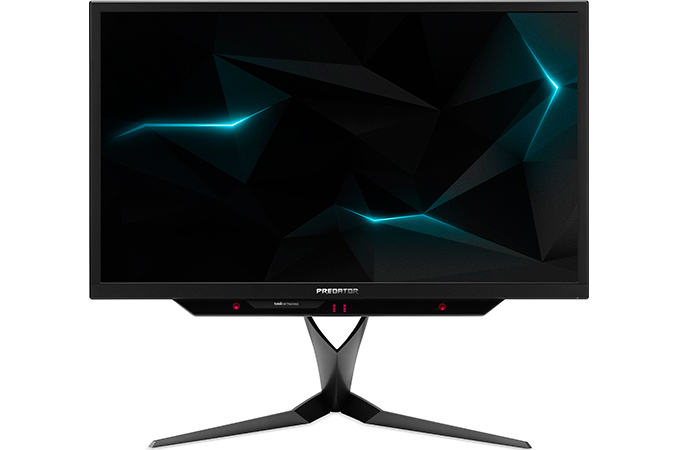
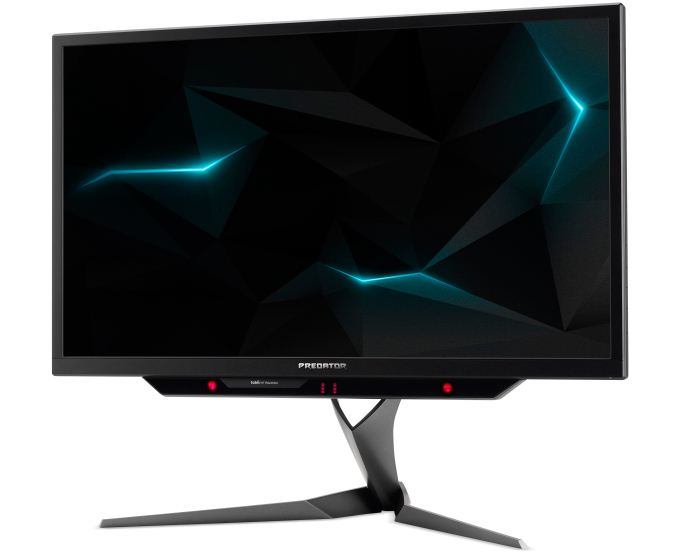

 Quote
Quote
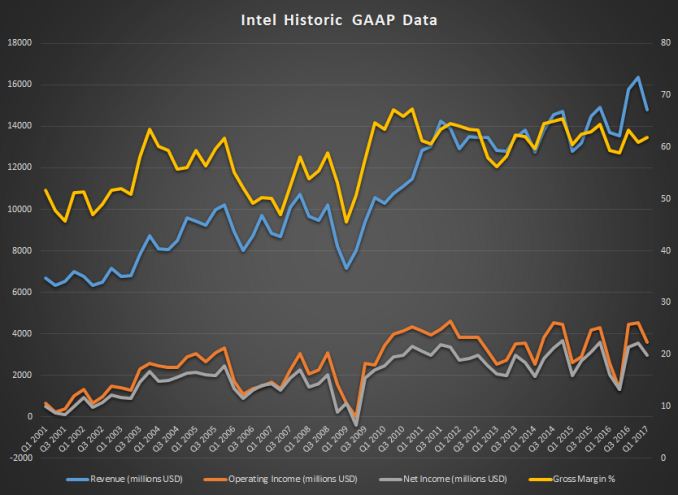
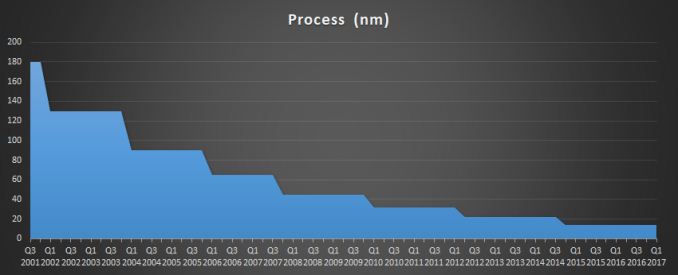

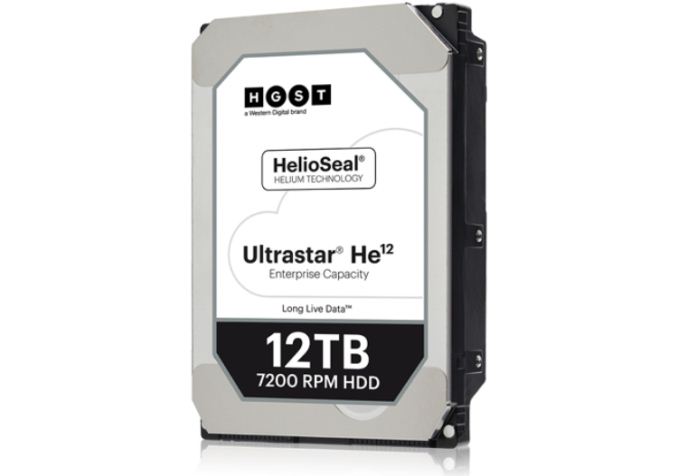
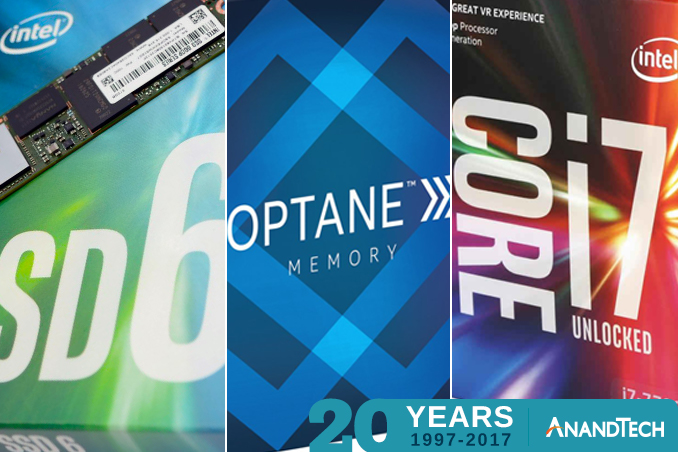





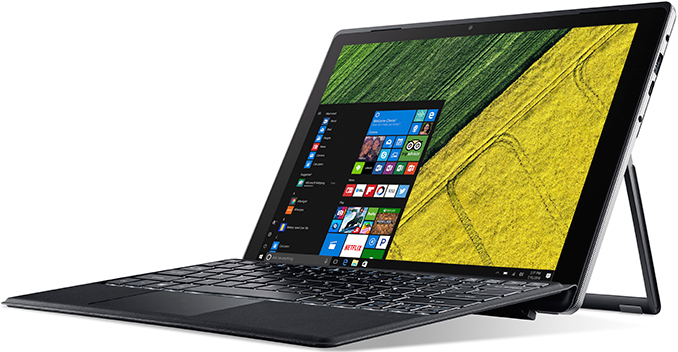




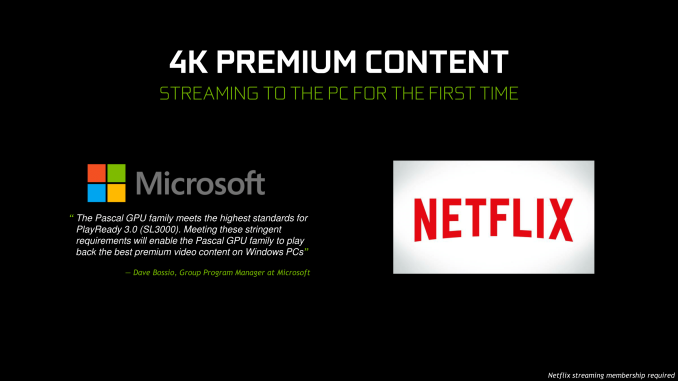
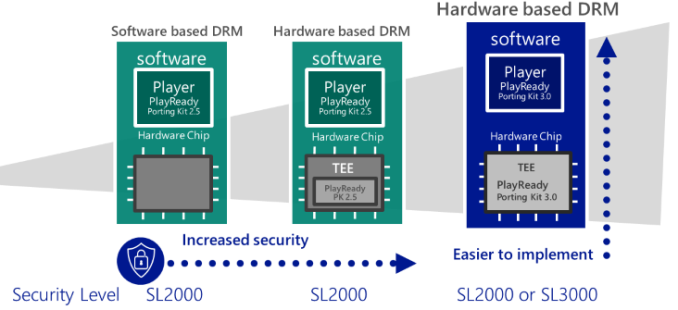
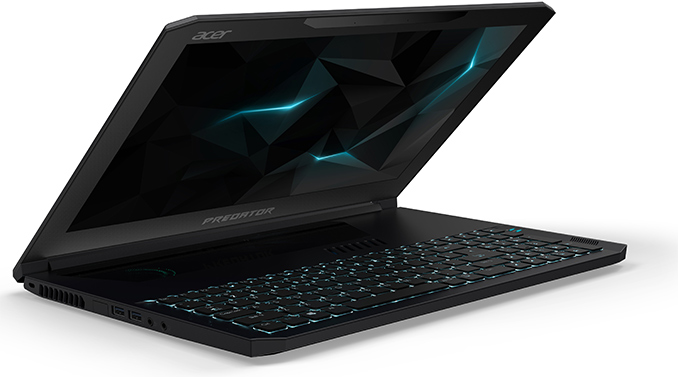



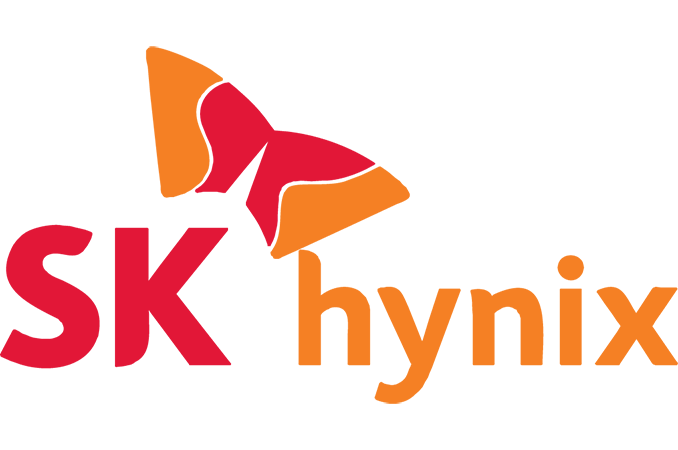
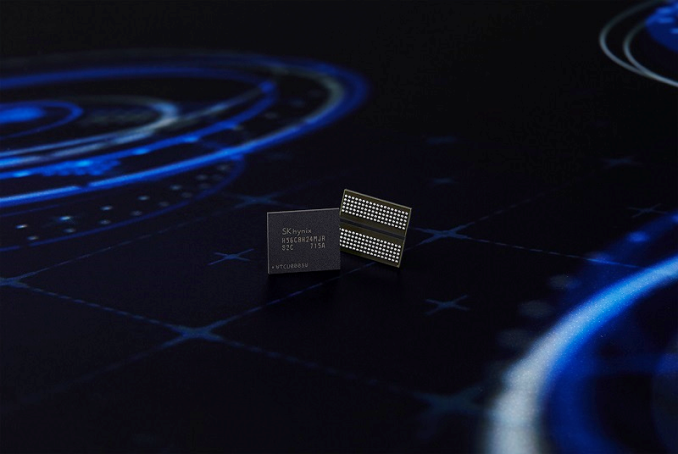
















Bookmarks